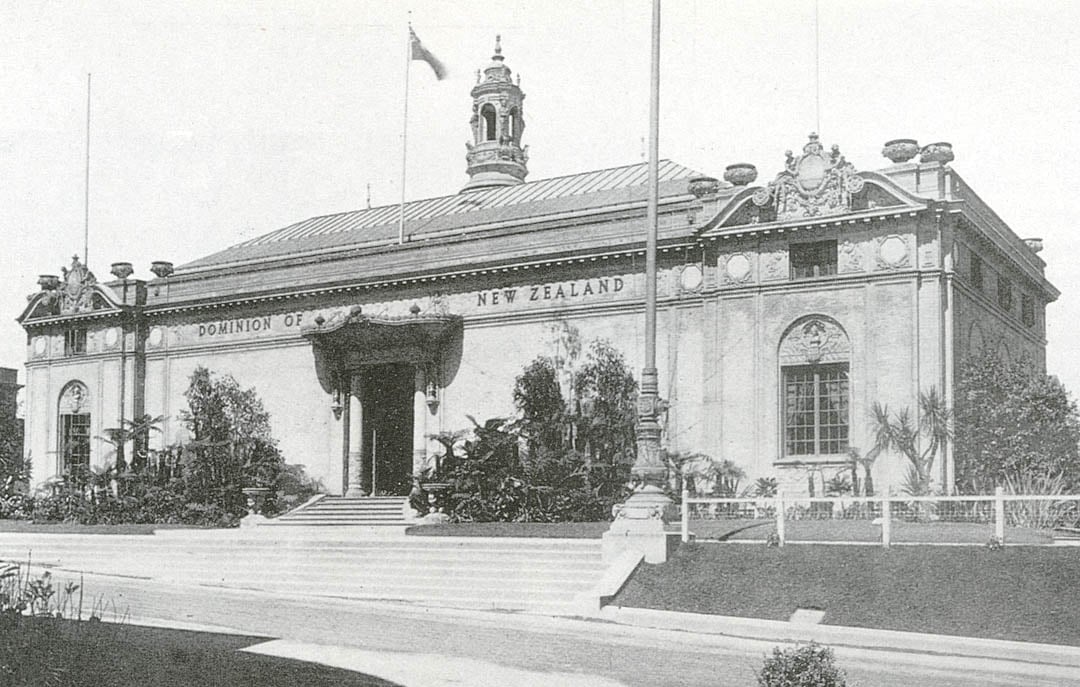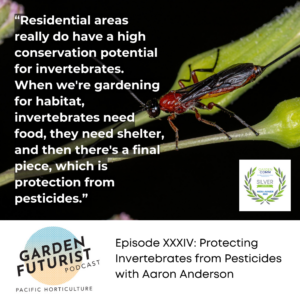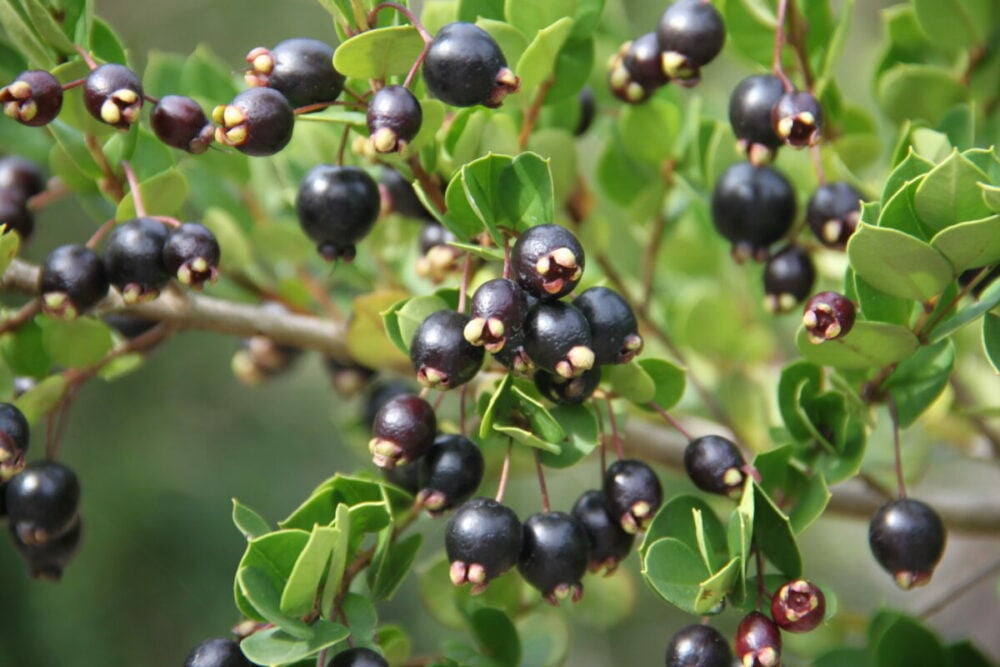
San Francisco’s New Zealand Garden Legacy

Contributor
- Topics: Plants You Need
New Zealand has supplied California with scores of dependable, non-invasive landscape plants, including many species indispensable to gardens in close proximity to the ocean.
In February 1915, San Francisco welcomed the world to one of the grandest world’s fairs ever. The Panama-Pacific International Exposition (PPIE)—dubbed by its promoters “The City of Jewels”—lasted only ten months, after which it was almost completely torn down and carted away, leaving scant evidence today of its once glorious existence. A little-known legacy of the PPIE is a group of New Zealand native trees in Golden Gate Park’s Strybing Arboretum, trees that anchor one of the largest, oldest and most diverse public collections of New Zealand plants outside of New Zealand. In the aftermath of a devastating windstorm in 1995, ambitious plans have been drawn to restore and expand Strybing’s historic New Zealand collection, thereby opening a new chapter in San Francisco’s long history of cultivating New Zealand plants and inviting a look back at how well these species have performed there.
Though the exposition was probably the largest single early introduction, San Franciscans had been importing attractive, dependable landscape plants from New Zealand long before the Panama-Pacific. According to horticultural historian HM Butterfield, an 1859 importation of plants and seeds to William Walker’s Golden Gate Nursery in San Francisco included the red-flowered pohutakawa or New Zealand Christmas tree (Metrosideros excelsus)—today one of San Francisco’s most popular street trees—as well as the now-ubiquitous New Zealand flax (Phormium tenax). Another shipment to San Francisco sometime around 1865 brought the world’s southernmost palm, the arrestingly beautiful nikau (Rhopalostylis sapida), and the karaka (Corynocarpus laevigatus), a tough, evergreen landscape tree with thick, shiny green leaves.
The first annual flower show of the Bay District Horticultural Society in August 1871 featured six New Zealand species, including the showy, pea-flowered kaka beak (Clianthus puniceus), still popular today in both its red- and white-flowered forms. Other early importations introduced San Franciscans to the spiky silhouette of the cabbage tree (Cordyline australis); to the lemonwood (Pittosporum eugenioides), indispensable as a hedge in older gardens; to the glossy-leaved mirror plant (Coprosma repens), now a common epiphytic weed in the crowns of Canary Island palms around the city; and to many other now-familiar New Zealand landscape plants. By the time of the 1915 fair more than fifty different kinds of New Zealand woody plants were growing in Golden Gate Park, including sixteen species and cultivars of Hebe.

Exposition Introductions
The 1915 exposition celebrated both the opening of the Panama Canal that year and San Francisco’s triumphant recovery from the disastrous earthquake and fire nine years earlier. Everything about the fair was on a grand scale. Held on 635 acres in what has become the city’s Marina District, the exposition cost $15 million to build, attracted eighteen million visitors and included 30,000 trees. The fair’s centerpiece was the 435-foot Tower of Jewels, adorned with more than 100,000 cut-glass “novagems” that reflected light day and night. Feats of human achievement were displayed in giant “palaces,” including a glass-domed Palace of Horticulture that glowed like a giant opal when lit from within.
Thirty-one nations exhibited at the PPIE and twenty-one built pavilions, including the Dominion of New Zealand, eager to expand its international trade. New Zealand’s attractive pavilion was designed by San Francisco architect Lewis Hobart, who later designed Grace Cathedral and many other prominent San Francisco buildings. Hobart’s New Zealand pavilion is reminiscent of his later plans for the original buildings at the California Academy of Sciences and the San Francisco Zoo, for which the pavilion possibly served as a prototype. The stucco pavilion building measured 45’ by 110’ and was built in a style described as “mingled French and Italian, with a highly ornate façade.” (Such a European-inspired design was not repeated when New Zealand returned to San Francisco to exhibit at the 1939 Golden Gate International Exposition on Treasure Island; at that fair, a traditional Maori meeting house was erected.)
Surrounding the many exhibits at the 1915 pavilion, which showcased New Zealand culture, agriculture, and trade, was a diverse collection of native plants displayed both inside and outside the pavilion and in a small conservatory at the rear. The exotic appearance of massed tree ferns and other New Zealand natives were a major draw for the visiting public, causing the pavilion to become one of the most admired spots of the exposition.
Golden Gate Park’s renowned superintendent, John McLaren, served as the chief landscape supervisor for the PPIE, an association that was to greatly benefit the park and its developing collection of New Zealand plants. At the fair’s close, Edmund Clifton, New Zealand’s Commissioner to the PPIE, presented McLaren with the exhibit’s entire plant inventory. The January 13, 1916 San Francisco Park Board minutes record the transfer of “one hundred-fifty plants from the New Zealand building at the Panama-Pacific Exposition to Golden Gate Park.”
The gift vastly enriched the Park’s New Zealand collection, which grew from fifty-four species and cultivars in 1910 to an impressive 174 in 1922. The 1922 Golden Gate Park woody-plant inventory reveals that many of the New Zealand plants new to the park had been planted in the vicinity of the California Academy of Sciences, from which they subsequently were displaced by that expanding institution. An old totara (Podocarpus totara) growing today near the south entrance to the Academy serves as a reminder of these plantings, which constituted the park’s first concentrated display of New Zealand species. A number of New Zealand species also were planted in or moved to the “Waterworks” section of Golden Gate Park, which McLaren had set aside in the early 1890s as the site of a future arboretum; Strybing Arboretum eventually was developed in this area.
Detailed information on these and other early twentieth century plantings in Golden Gate Park is difficult to find. Besides the Park Board minutes, no other primary documents concerning the New Zealand gift have been located, either in the Bancroft Library (repository of the official records of the 1915 Exposition) or in the New Zealand National Archives, where records concerning the nation’s botanical exhibits at the PPIE were destroyed in a 1952 fire. Some information can be gleaned from surviving photographs, from herbarium vouchers made of plants displayed at the PPIE or growing in Golden Gate Park, or from a 1914 gardening pamphlet by the dean of New Zealand botany, Dr Leonard Cockayne, entitled New Zealand plants suitable for North American gardens, which presumably was distributed at the fair.

Legacy Trees
Despite the scarcity of solid evidence, several specimens now growing at Strybing are almost certain to have come from the PPIE. In the 1950s, Eric Walther, Strybing’s first director, told botanist Elizabeth McClintock that the rimu tree (Dacrydium cupressinum) that today flanks Strybing’s Zellerbach Garden vista had its origin in the Panama-Pacific. Herbarium vouchers in the California Academy of Sciences herbarium provide corroborating evidence for this provenance.
The rimu, a graceful giant with long, pendulous bronze-green branches, is one of the dominant trees at mid-elevations in New Zealand’s mixed coniferous-broadleaf forests. Sometimes reaching nearly 180 feet tall in the wild, it would seem that this is a tree only for park use, but the slow growth of Strybing’s original specimen (amply irrigated on reclaimed sand dunes in San Francisco’s mediterranean-maritime climate) suggests that the rimu also is a good choice for the home garden in coastal California. The rimu’s distinctive weeping habit appears prominently today in several young but well-regarded public and private gardens in the Bay Area, including the new Entry Garden near Strybing’s main gate.
Another tree at Strybing likely originating with the fair is the enormous pukatea tree (Laurelia novae-zealandiae), located immediately to the northeast of the rimu. The pukatea’s vigorous growth, complete lack of pest or disease problems, and crisply clean, glossy-green leaves suggest that this is a tree that should be tried more widely in boulevard and park plantings. At forty feet, Strybing’s specimen is surely one of the largest in cultivation outside of New Zealand.
Also attributable to the PPIE are four sizable examples of the magnificent totara, which are among the best contenders for creating a high tree canopy in Strybing’s New Zealand section. The totara is dioecious, and male and female specimens are easily recognized at the arboretum (look for elongated staminate catkins on the males and roundish, red “fruits” on the females). Growing to one hundred feet tall in lowland forests, the totara’s dense, wiry, flat, needle-like leaves and thick furrowed bark imbue it with a somewhat somber appearance. The fact that the Maori make their best canoes from the substantial trunks of this species is easily appreciated while standing in its dense shade. Like the rimu there, Strybing’s totaras are still relatively short and squat, some with multiple instead of single trunks, likely the result of early nursery practices.
The PPIE also introduced to Golden Gate Park various species of houhere, including Hoheria sexstylosa and H. angustifolia. Hoherias as a group make excellent, if somewhat short-lived, garden trees appropriate in size for the small home garden. Although the original specimens of these attractive, white-flowered hibiscus relatives may no longer exist, their progeny flourish in the arboretum and in the park today. Similarly, a prominent and mature massing of large-leaved Brachyglottis repanda shrubs along Stow Lake Drive is almost certain to have been propagated from PPIE stock.
Growth of the Strybing Collection
Throughout the 1920s and 1930s, and following the official dedication of Strybing Arboretum in 1940, the New Zealand collection in the arboretum area and the in park grew steadily. An unpublished 1936 park inventory records a whopping 289 New Zealand woody taxa in eighty-nine genera, an increase that can be largely attributed to importations from the New Zealand nursery firm of Duncan & Davies. Perhaps half of the existing species in Strybing’s New Zealand collection today, including many well-established groundcovers, were introduced through these shipments, which came through the park’s nursery, and after 1960, through the arboretum’s nursery as well.
By the 1958 publication of the Arboretum’s first plant inventory, assembled by Walther and McClintock, 190 taxa in fifty-six genera could be found growing in the New Zealand collection at Strybing. The collection then was displayed in an area roughly half the size of its present area and was divided into two sections, both of which already featured numerous New Zealand trees and shrubs beneath a canopy of Torrey and Monterey pines and Monterey cypress planted during the park’s original afforestation in the late nineteenth century.
With the implementation of Robert Tetlow’s 1959 master plan for Strybing, the New Zealand collection took on its present arcing layout and two-acre size. Plantings have continued gradually over the past forty years. Many specimens throughout the collection are relatively recent additions, including a host of Hebe and Phormium species and cultivars now popular in the California nursery trade.
Strybing’s New Zealand collection today ranks among the top public collections of New Zealand plants, along with the collections at the Santa Cruz Arboretum and at the Huntington Botanical Gardens in southern California. It is valuable not only because of its taxonomic diversity and historical importance, but because of the considerable age and size of individual specimens. Several plants are possibly the largest of their type outside of New Zealand. The collection represents one of the longest-running plant introduction experiments involving New Zealand plants anywhere.
Horticultural Performance

A wide range of New Zealand natives have performed admirably at Strybing, such that they can be recommended for irrigated gardens up and down the California coast. Since they hail from a place that receives year-round rainfall, most New Zealand natives depend upon summer water in California, although fog-drip has permitted several species to naturalize along the coast. Hebe speciosa, Muhlenbeckia compressa, and the otherwise excellent ngaio (Myoporum laetum), are among the worst woody invaders from New Zealand; ngaio is listed as a species of concern by the California Exotic Pest Plant Council.
A brief summary of recommended New Zealand species for coastal gardens would have to include Pseudopanax ferox, which currently is finding favor among Bay Area garden designers. The juvenile form of this species is admired for its narrowly upright, tiered architectural character, as well as for the mock-ferocity of its slender, sharply serrate juvenile leaves, which resemble twelve-inch pruning-saw blades jutting out from a central column. The result is something like the partially opened “skeleton” of an umbrella. Maturing into an undistinguished broad-leaved evergreen shrub or small tree, the bronzy, jagged appearance of the juvenile form is simultaneously alluring and bizarre, producing a tropical effect heightened by group planting.

The nikau (Rhopalostylis sapida) is arguably the finest palm for small gardens near the coast, sporting stout, feather-type fronds atop a lustrous, bright-green crownshaft and a handsome, ringed trunk. Several beautiful specimens grow happily at Strybing in the shade of other trees. Growing slowly to thirty feet, the nikau prefers regular water and fertilizer, and shelter from the wind. It reportedly resents being moved in large sizes; starting with a small, container-grown specimen will likely produce the best results.
The New Zealand flora contains numerous trees appropriate for the home garden, and Strybing’s collection has many on display. A good example is the titoki (Alectryon excelsus), an evergreen tree to thirty feet with shiny-green compound leaves and clusters of odd, grape-sized fruit that resemble bloodshot eyeballs. A venerable titoki, planted in the 1880’s, can be seen on the UC Berkeley campus, and several younger specimens grow at Strybing. Fuchsia excorticata, a tree sometimes exceeding fifty feet in the wild, is the largest of all fuchsias and one of the few deciduous trees in New Zealand forests. Flowers are borne directly on the wood (i.e. cauliflorously) in two forms: females with long styles, and hermaphrodites with blue pollen, a rarely encountered botanical characteristic. The distinctive, thin reddish bark is exfoliating, an adaptation designed to shed epiphytes. The tree fuchsia is unaffected by the fuchsia mite that has decimated hybrid fuchsias in the Bay Area. The rewa-rewa (Knightia excelsa), one of New Zealand’s few proteas, is a nearly fastigiate, upright tree with gray-green, leathery, strongly serrate leaves. Dark-vermilion, spiky racemes are borne over a long flowering season, and are sure to attract both hummingbirds and visitor comment.

New Zealand’s famous kauri (Agathis australis) is one of the most massive of all trees—specimens 180 feet tall with a twenty-foot diameter trunk have been recorded—and therefore seems an unlikely candidate for garden use. But the species is also one of the most long-lived, and grows so slowly in cultivation that it should not present any space problems for at least a century or two. The slender habit of a young, glaucous-blue kauri is breathtakingly sculptural, and is complimented by the tightly wound, roundish cones (Agathis is derived from a Greek term meaning “ball of string”). Another gymnosperm that has fared well at Strybing is the lovely kawaka (Libocedrus plumosa), a relative of the California incense cedar. Conical in shape, the lime-green kawaka has flattened fern-like juvenile leaves and scaly adult leaves, and is tolerant of drier garden conditions.
The myrtle family is well represented in the New Zealand flora (eighteen species in five genera) and in Strybing’s collection. Best known is the pan-Pacific genus Metrosideros, which in New Zealand includes both arborescent and vining species. The easily grown pohutakawa (Metrosideros excelsa), a popular street tree in San Francisco and other coastal communities, ultimately forms a wide-spreading tree to sixty-five feet tall with gray-green leaves, conspicuous aerial roots in humid regions, and spectacular red flowers. Two enormous specimens, recovering from heavy storm damage, can be found at Strybing. A pale yellow-flowered form, ‘Aurea’, grows near the Helen Crocker Russell Library there.
The smaller, carmine-red flowers of the northern rata (Metrosideros robusta), can also be seen at Strybing; specimens there will eventually become much taller trees, perhaps as high as ninety feet. The best of the tree species of Metrosideros is the southern rata (M. umbellata), a slow-growing, densely foliaged small tree with flower colors ranging from red to an amazingly vibrant orange. Young specimens of this species have yet to flower at Strybing. Although they can produce occasional flowers at any time of year, all three tree Metrosideros discussed here bloom most profusely in mid-summer, and in rare years can sport a thick blanket of flowers that almost completely obscures the foliage.

A good choice among the vining species is Metrosideros carminea, a fine-textured, red-flowered creeper that can cover a garden wall or the side of a one-story building. At Strybing it flowers well only in sunny exposures, where it unfortunately also experiences spider-mite problems. Other myrtle family representatives at Strybing include various cultivars of Lophomyrtus, especially L. ‘Gloriosa’, a small tree with variegated leaves; and the little-seen kanuka (Leptospermum ericoides) that, at nearly fifty feet tall, is now emerging above the tree canopy at Strybing.
A myrtle relative particularly popular around Strybing is Leptospermum scoparium ‘Helene Strybing’, a large-flowered manuka cultivar named for the arboretum’s early benefactor. A small tree or shrub growing ten to twenty feet tall in the wild, manuka is the dominant plant in the scrub vegetation type found throughout New Zealand. White flowers in spring and summer are followed by persistent, five-valved seed capsules. Dozens of cultivars of manuka have been selected for their brightly colored (white to pink to red) or double flowers. ‘Helene Strybing’ was found among a group of L. scoparium ‘Keatleyi’ seedlings propagated from the arboretum in about 1949, and was selected for its unusually large single flowers (about the size of a quarter) and bright pink, wavy margined petals. This selection won an Award of Merit from the California Horticultural Society in 1966.
[sidebar]
The “New Zealand Garden”
On December 11, 1995, a winter storm carrying winds in excess of 100 miles per hour assaulted San Francisco from the southwest, toppling hundreds of trees in Golden Gate Park, many in the Strybing Arboretum. The storm hit Strybing’s New Zealand collection the hardest. In this area alone, nine enormous Monterey cypress trees were wind-thrown, crushing important collection plants and blocking major paths and vistas.
After more than a year of intense study, review and refinement, an innovative renovation plan was completed in December 1998 by San Francisco landscape architect Tito Patri. The new plan will transform the existing collection into the spatially and thematically unified “New Zealand Garden,” which will feature vastly enriched plantings, improved circulation, an intimate outdoor amphitheater, and an exciting new exhibit demonstrating the use of New Zealand plants in the home garden. Fundraising for the garden is underway.
[/sidebar]
Many other New Zealand plants have proven worthy at Strybing, including a host of flowering shrubs in the genera Hebe and Senecio. Good groundcovers include Fuchsia procumbens and Gunnera hamiltonii; species of Cotula and Acaena have shown themselves to be quite aggressive at Strybing, as elsewhere. The Chatham Islands forget-me-not (Myosotidium hortensia) and the Poor Knights lily (Xeronema callistemon) rank among the most-prized herbaceous New Zealand natives. Both have been somewhat fussy with regard to siting at Strybing, but in the right moist, shady spot have regularly produced their unforgettably beautiful flowers.
There is still much to be learned about the horticultural performance characteristics of New Zealand species, especially those of mature specimens in cultivation. It is fascinating to trace Eric Walther’s acquisition plans for the New Zealand collection at Strybing (and Golden Gate Park), as recorded in articles published in various horticultural journals from the 1920s through the 1950s. Walther closed each article with an inventory of desirable New Zealand species yet to be tested in San Francisco. Some species listed, such as the beautiful ivory-flowered tawari (Ixerba brexioides), still await introduction, presenting Strybing with both an opportunity and a challenge as it carries forward the New Zealand garden legacy.
Share:
Social Media
Garden Futurist Podcast
Most Popular
Videos
Topics
Related Posts

Ground Up Science for Greener Cities with Garden Futurist Dr. Alessandro Ossola
Spring 2023 Listen to the Podcast here. Alessandro Ossola is a scientist who gets very excited about the challenge of climate change allowing for an

Readying Urban Forests for Climate Realities with Garden Futurist Dr. Greg McPherson
Winter 2023 Listen to the Podcast here. “Going from the mow and blow to a more horticulturally knowledgeable approach to maintaining the landscape. And that

Low Maintenance Gardens – Better for Pollinators and People
Autumn 2022 “I come out every day. It’s therapy, my meditation.” Janet’s young garden transformed from overgrown, invasive plants to mostly natives. The dailiness of

Calochortophilia: A Californian’s Love Affair with a Genus
Summer 2022 I can chart the progression of my life by Calochortus. For the last two decades, at least. As a teenage girl growing up










Responses